It's certainly not every day we get to see new Origin concept art or unused designs from the classic Wing Commander games, but we've got a birthday treat today! Joe Garrity recently uncovered an amazing set of cockpit art and animations from a fighter we've never seen before. The lock and autopilot lights are unmistakable, and there are vertical and horizontal bars that could definitely be for a gun capacity and afterburner fuel. However, there are some remarkable differences as well. There seem to be two radar displays, and the VDUs flip open and closed. There appear to be supplemental heads-up VDUs that overlay on the windscreen, as well as something that resembles a very large targeting crosshair in the center of the dashboard. It has a very cool illumination startup sequence as well.
So, what is the ship? And what's up the functional differences we don't see elsewhere? Joe uncovered these on a 5.25" floppy labeled "DISK 9 - PANEL X-LBM SCREENS.ANM" from artist Dan Bourbonnais. He had to get the proprietary "Deluxe Animator" software going to read the files properly. The still screenshots are dated April 22, 1991, while the animation has a December 11, 1992 date stamp, which could be artificially delayed due to backing up or disk transfer. The brown durasteel could imply a Kilrathi design, but it lacks overt alien markings that the Dralthi II and Jrathek art contained. It's also interesting that this concept dates back to the time Secret Missions 2 was released, but the animations are ahead of their time and the different dashboard elements (quadruple 5.25" floppy drives are a nice touch though!) raise more questions than answers. LOAF's thoughts on the subject are below. Do you have any theories about what this could be? Post them in the comments!
A potential Wing Commander mystery is afoot!
Dashing game archaeologist Joe Garrity recovered it from an old Origin-internal diskette... it certainly looks like a Wing Commander cockpit, but it isn't one that ended up in any of the games (and it doesn't quite /work/ like other WC cockpits.) Any ideas?
What we have here… is a good, old-fashioned mystery! To preface this: I don’t KNOW what it is, but I can make some educated guesses as to possibilities.
First: I know that this immediately screams ‘Kilrathi cockpit’… but I would caution that I think that’s a bit of an anachronism. It is the same color as the Kilrathi cockpits we see later in the series, including the Jrathek and the ships in Wing Commander Armada… but in 1991, that color scheme had not yet been established. Wing Commander II (in development) was using the lighter tan color for the Kilrathi space camo… but it also used this same color for the cockpit of the human Rapier (as did Wing Commander I.) This would have also closely followed The Secret Missions 2, which showed the first Kilrathi cockpit… which was steel and purple. Finally, there’s no Kilrathi writing. At the time, Kilrathi text was a series of dots and dashes arranged vertically. The Dralthi Mk. II cockpit in Secret Missions 2 is full of them (and has human text on sticky notes added over them! Immersion!) while this cockpit has only English writing. [One other thing that makes it feel like a Kilrathi cockpit is the fact that the large, red central display immediately looks like the red Kilrathi armor indicators used in all five of their cockpits in Wing Commander Armada. It’s not the same graphic at all (and Armada was three years later, an eternity at the time), but it feels very similar at first glance!)
One thing I can say for certain is that it is NOT a ‘working’ (gameplay) Wing Commander cockpit. While the cockpits in Wing Commander I and II vary wildly in shape, color and overall design, they have several common elements that this lacks:
- Identical blank spaces for VDUs. These need to be the same size because the images the game overlays in real time are the same for all the ships. The mystery cockpit has two small black squares that imply the same VDU setup, but they’re proportionately much too small to function in the game. (After the ‘flip’ animation, there is more space… but the shape still isn’t right.)
- Similarly, Wing Commander ships have all have identical (across each game) circular radar displays. Again, this cockpit seems to have one (two, actually!) but they’re again much too small and when you look closely you’ll see they aren’t Wing Commander radars at all. The Wing Commander scanners divide space into four quadrants with an X, while this uses a cross +. That seems like a small thing, but it means the radar wouldn’t be functional in a WC game because it’s not showing you what’s in front of and behind you. (Credit to Toast for noticing this one!)
- There is no shield/armor indicator. These DID have a different style in each ship in the early games, but they were always distinct enough to be identified. I don’t see any equivalent here.
- There is no space for the set and actual speed indicators. (Though, one small point in favor of a Kilrathi ship is that the Dralthi didn’t have such indicators either and instead had a small computer ‘added’ by humans to display them.)
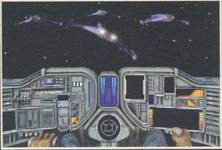
I will note that none of that excludes it from being concept art for a Wing Commander, and in fact many of the same failings this cockpit has are repeated in another bit of lost cockpit that we DO know is from Wing Commander from three years later (pictured right). This so-called mystery cockpit was used in advertising for Super Wing Commander, but does not match any of the art used in the finished game. It, too, lacks VDU spaces, reuses art from earlier Wing Commanders, is missing certain displays and so on!
It also has some elements that are distinctly not functional in Wing Commander II:
- The large, central ‘target’ area doesn’t match a function in the early Wing Commander games. It seems to be the focal point of the cockpit, but if this were a ship you fly there’d be no reason to ‘use’ it. (Which I believe suggests that this was for a cinematic; more on that theory later!)
- I can say from experience that it’s unlikely the 5.25” drives on either side of the cockpit would have made it past a Chris Roberts art review! :) (Though there did seem to be a pair of IBM M-Type keyboards in the Orion in Privateer…) In fact, I’d venture to say that having the ‘cute’ diskette drives there is much more the sort of nod you’d see in a Richard Garriott or Warren Spector project.
- No Wing Commander ship at this time had used a ‘glass cockpit’ where displays appear over the game area (as this does in the animation.)
- The fact that it has a ‘startup’ animation means that it doesn’t match any of the other Wing Commander cockpits at the time. There’s nothing in those games that has the cockpits turn on/off with resultant changes to the lighting.
On the other hand, it DOES include elements that ARE unquestionably from Wing Commander:
- The ‘LOCK’ and ‘AUTO’ lights are from Wing Commander II’s cockpits. I believe the specific buttons here match the Epee cockpit.
- The rectangles of green and red lights adjacent to the diskette drives are modified from similar panels on the Wing Commander Rapier artwork. They aren’t specific to Wing Commander II, though, they were originally created for the Rapier in the already-published Wing Commander I.
So, what games COULD it be from? To narrow down the options, I went back to the Point of Origin (Origin’s internal company newsletter) archive and found that the very first issue was published just under a month after the date on these files.
At that time, Origin had five product development groups working on four original games:
- Martian Dreams (Scheduled for May, shipped on time)
- Wing Commander II (Scheduled for Summer, shipped in September)
- Ultima VII: The Black Gate (Scheduled for Christmas, shipped April 1992)
- “Air Command” (Scheduled for Christmas, likely shipped April 1993)
- (The fifth group was working on the CD-ROM conversion of Ultima VI for the FM Towns. I strongly suspect that ‘Air Command’ was a working title for Strike Commander rather than a cancelled project, as it vanishes the next month and mentions of Strike begin.)
I include the scheduled release dates because it tells us where each game was at the time. Martian Dreams went to beta about a month after these images were finished, which suggests that it was getting close to wrapping up. Wing Commander II would have been midway through development, making it the most likely to be having new art created at that specific time. Ultima VII and Strike Commander were very early in the process, but demos of both were being created to show at Summer CES around this same time. (It also lets us rule out a few other projects that might have been tempting options: Wing Commander Academy, which DOES feature a similarly-colored Kilrathi cockpit, and Privateer weren’t on the table yet.)
With all that analysis, I’ve come up with several possible theories. I suspect Strike Commander and Ultima VII are not likely (while Ultima VII had a Kilrathi ship, it wouldn’t have been the focus at this point in development!), which leaves Martian Dreams and Wing Commander II. I believe it could fit into either game:
- It could be a cutscene from Martian Dreams. Martian Dreams does end with a cutscene in which the characters return to Earth aboard Jules Verne’s spaceship (you see the ship take off and then in the next shot landed.) It’s possible this was created for that sequence and then cut to save disk space. In that case, the Wing Commander elements (and the disk drives!) would be intentional nods of the sort Origin was often fond. The startup animation would then be where you see it take off and rocket out of the Martian atmosphere into space.
- It could be a cutscene from Wing Commander II. We have hard proof (from the box itself!) that backgrounds and faces were cut from Wing Commander II, including a younger Blair head and courtroom backgrounds. The intro was rewritten late in the process to cut down on disk usage (and so instead of seeing young Blair at a trial, you have old Blair talking to Admiral Tolwyn in his same office set used for the rest of the game.) The place I can imagine this is the attack on the Tiger’s Claw: if it’s a Kilrathi cockpit (as noted, not a given!) then I could see an alternate version of the shot where you see the action from inside one of the stealth fighters. This would also explain why it doesn’t have parts needed to function, why there’s a startup animation (as it’s decloaking) and then large central ‘target’ area, since the point of the cockpit would be to see it lock and fire a torpedo at the ‘Claw.
- It could be for a totally unknown sales demo or a failed product pitch. Origin’s sales team was aggressively pursuing distributors at this time, and we know they showed demos of all these games at CES in 1991. It’s likely the Wing Commander II demo was the version which currently survives (featuring an alternate version of the first part of the intro)… but there may have been some other, unspecified behind-closed-doors tease this was done for. As for failed pitches, ‘Wing Commander but you’re a Kilrathi!’ was certainly discussed from the day Wing Commander I came out (and unexpectedly eventually became System Shock!)… it could be lookdev for that sort of project pitch.
The CVE class had been a source of intense debate back in the Concordia's pilot ready room. This new class of ships was a rush job to try and plug the gaps after the heavy losses of the last campaign. Nine transport ships, already three quarters completed, were pulled out of the transport assembly stations and converted into escort carriers; and a single look at her convinced Jason of the folly of the whole damn thing.
If Captain Bondarevsky had been looking at an American escort or light carrier from the Second World War, his thoughts probably wouldn't have been much different. Escort carriers, in particular, were the type of ship only a parent could love. In both the real world and Wing Commander, escort carriers were stop-gap measures when larger fleet carriers were in short supply. The Wing Commander version actually combines the history of the escort carrier with that of another class of ship, the Independence-class light carrier, to create the background for the Wake-class.
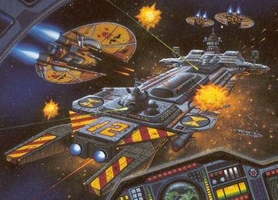
2666 was a bad year for the Confederation. A large number of fleet carriers were lost in engagements with the Kilrathi and replacements were still a ways off. The Confederation needed something to fill the gaps in their carrier forces until those new ships came online. The solution was the Wake-class escort carrier. Nine medium transport hulls were taken off the assembly line and prepared for conversion to escort carriers capable of carrying 45 fighters. Along with creating a flight deck and hangar area, the conversion also replaced the old transport engines with those from Gilgamesh-class destroyers for added performance and mounted a number of turrets to improve defenses.
The CVEs were designed with four roles in mind:
- Fighter Transport: The transporting of fully assembled spacecraft from the factories to front-line units and installations.
- Convoy Duty: Escorting convoys thereby freeing up other heavy ships for more important missions.
- Space-to-Ground Support: Provide ground forces with close air support during secondary operations.
- High Risk Deep Penetration Raids: CVEs are cheap and quick to build and above all else expendable and therefore ideally suited for high risk operations.
Three of the above roles are the same as those for their real world cousins. High risk deep penetration raids were not something escort carriers were used for during the Second World War. Along with almost no armored protection, they were far too slow, with a top speed of only 20 knots compared to the 32+ knots for the larger carriers, to undertake such operations. They would have had a hard time surviving any kind of raid, but especially one requiring speed. There were some wartime proposals, mostly from Admiral John H. Towers (Deputy Commander-in-Chief, Pacific Fleet), to conduct deep carriers raids against Japan in early 1944 before the American offensives brought them to the doorstep of Japan in 1945. For the Wake-class, it was that fourth reason that made them famous. First with the TCS Tarawa's raid on Kilrah in 2667 which not only caused the destruction of numerous ships under construction but also aided the Confederation's victory at the Battle of Vukar Tag. It was followed by subsequent raids by the TCS Enigma and Khorsan into the Kilrathi rear that did so much damage the Kilrathi were driven to call for a truce.


Admiral Towers pushed for deep raids against Japan in 1944.
The United States faced a similar lack of carriers before the Second World War. A year and a half before Pearl Harbor, the United States passed the Two-Ocean Navy Act in July 1940. This legislation called for a 70% increase in the size of the US fleet. However, even though it was passed 18 months before the United States joined the war, the first fleet carriers built under the law wouldn't reach the Navy until 1944 (wartime production increases had them start to arrive in 1943). While not a major concern in July 1940, it became one on December 7, 1941 when war came to the United States. On that day, the US Navy possessed seven fleet carriers (the Langley had been converted to a seaplane carrier). Of them, six were suitable for operations in the Pacific. The USS Ranger (CV-4) was not due to defects in its design and low top speed. The Navy needed carriers, but where to find them? The answer lied with the former Assistant Secretary of the Navy under President Wilson, now-President Franklin Delano Roosevelt.
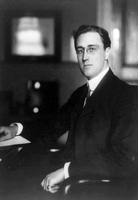

Franklin Delano Roosevelt was instrumental in the development of the CVE and CVL
President Roosevelt proposed both types of ships that came together to help the war effort and provide the background for our beloved Wake-class. The first, the escort carrier, was proposed in October 1940. Escort carriers often get overlooked in favor of the larger carriers. And yet, out of the 151 carriers the United States built during the Second World War, 122 of them were escort carriers. America's first escort carrier, the USS Long Island (CVE-1) was commissioned six months before Pearl Harbor in June 1941. She had been laid down as a cargo liner in 1939 but was acquired by the US Navy before being completed. She was then converted into an aircraft carrier. Experiments were conducted on her to show the feasibility of converting further cargo ships into carriers. They proved that such operations could be undertaken and provided an important foundation of experience for later escort carriers.
USS Long Island (CVE-1) and USS San Jacinto (CVL-30)
The other type was the Independence-class light carrier. Believing American entry into the war was imminent, President Roosevelt proposed converting cruisers then under construction into light aircraft carriers in August 1941. The Navy, at first, rebuffed the president and said the conversions would not be successful. But, the president was not to be put off and asked the Navy to look into the issue more. Then December 7th happened and the Navy quickly took up the cause.
Nine 10,000 ton Cleveland-class light cruisers were reordered for conversion into what became the Independence-class light carriers. Despite early misgivings by the Navy, these carriers proved their value throughout their wartime service. Displacing 11,000 tons (about a third of the Essex class), capable of making 31.5 knots, and carrying just over 30 aircraft, the Independence-class worked alongside their larger brothers throughout the latter half of the Second World War. Only one, the USS Princeton (CVL-23) was lost to enemy action during the Battle of Leyte Gulf in October 1944.
USS Cowpens (CVL-25) steaming with a fellow CVL and the USS Princeton (CVL-23) afire during the Battle of Leyte Gulf
While exploring the real history behind the Wake-class, I came across this quote from a pilot who served on the USS Cabot (CVL-28) which fits nicely with Bondarevsky's first impression quote and his thoughts after returning from Kilrah with the TCS Tarawa. I especially like that last line as Wingnuts are certainly familiar with the sight of two runways on a carrier.
At that time, I had not operated from an Essex-class carrier, so to me it was routine to operate off a smaller CVL. The deck was much narrower. You had to be lined up coming in; there was no way to be off center and make your landing...but the width was certainly much less on a CVL, since a CVL was built on a cruiser hull. With all that flight deck added on top of it, it had a tendency to roll much more than the Essex-class, so in rough seas, you were fighting a pitching and rolling deck.
The operations were different in that, since we were a smaller unit, the air group knew the shipboard people, whereas on the Essex you could be there for a year and not know the first lieutenant. But, in our case, it just seemed that you knew you were more of a family-type affair than aboard the larger ships; the camaraderie was much better, I thought, than on the Essex-class. Other than that, a CVL pilot was always a CVL pilot; they were proud of it. A CVL pilot would come in on an Essex-class carrier and would ask which runway to use-just to put the needle into them, you know. "Right or left runway? Which one?"
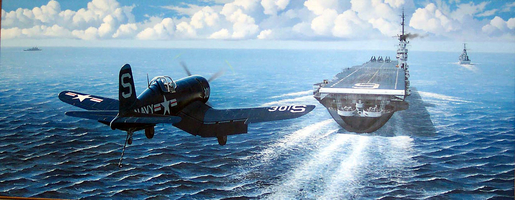
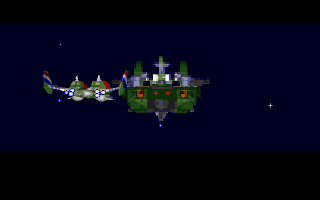
The Standoff team is happy to release the single package install (462 MB) for the CIC's 18th birthday. This file will install the complete game without the need to download multiple packages.
It's been an amazing journey for Standoff. Work on the game started in spring 2001. Wingnuts got their first taste of Standoff when Episode One was released on December 23, 2004. Episode Two came out on the CIC's 7th birthday in 2005. Episode Three followed on January 8, 2006 and the penultimate Episode Four was in Wingnut hands on September 27, 2007. The grand finale, Episode Five, came out on the CIC's 11th birthday in 2009.
As a team, we'd like to extend a very heartfelt thank you to the Wing Commander community for all the support over the years...and patience. Now get out there and save the Confederation...again!
L.I.F. has been hard at work on the Homeworld Remastered Mod the last few months and has a special present for Wingnuts this year. He's added the single player demo mission back into the mod as well as a brand new feature: an anti-missile stance. When units are set into this stance, they will attack missiles above all other targets (save bombers). It works much like the guard order which means that ships set in the anti-missile stance will continue as escorts for any fleets or convoys you may have. To compensate for the improved defenses from the stance, turret fire's hit chance on torpedoes and missiles was reduced to 10%.
Wingnuts can download it on MODDB and Steam.
Hot the heels of the WC Saga Deutsch Mod release and refinement, Luke and team have announced their project to port over all their numerous upgrades to the core WC Saga experience. The screenshots below show off some of the new features, from left: the new pilot welcome, extras menu, barracks, medals case, ship database, subtitle support, ready room, fiction viewer, text legibility improvements, and damage debris. These are just a sampling of the enhancements. Stay tuned for more info and development progresses!
What exactly is the Plus Pack? It contains all new features, improvements and bugfixes from our first project "Wing Commander Saga Deutsch" (short: WCSD) and will upgrade the international (english) version of WCS to WCSD level. [Above] you can see a few of these new features/changes.
Development and organisation will executed at our domain wcsaga.org. There we have a secure webspace, message board and some internal dev tools. FirstI I want to introduce the current WCSPP team members (in alphabetical order). In the next weeks/months we want to add more members for the departments like Beta test.
Death Angel - implementation, graphic design
Luke - implementation, programming
MajorSpawn - mission design, programming
RaudiXO - translation, implementation
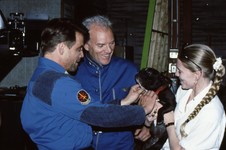 Over the years, we've posted a lot of fascinating items that are in some way related to the development of a Wing Commander product. These might be never before seen draft scripts that are wildly different from the final story, early sketches of ships and characters, candid photos from the film set, or high resolution source files of things you've already seen in some form or shape. We tend to post this material around specific events, such as a CIC birthday or to celebrate a classic game being released on GOG, and it's not so easy to keep track of it after the news is gone from the front page.
Over the years, we've posted a lot of fascinating items that are in some way related to the development of a Wing Commander product. These might be never before seen draft scripts that are wildly different from the final story, early sketches of ships and characters, candid photos from the film set, or high resolution source files of things you've already seen in some form or shape. We tend to post this material around specific events, such as a CIC birthday or to celebrate a classic game being released on GOG, and it's not so easy to keep track of it after the news is gone from the front page.
Our goal for the CIC's Document Archive was to make it easier for visitors to research the development aspects of Wing Commander games. In this section, we've sorted through hundreds of historic updates and categorized them under headings like "artwork", "design history" and "advertising." To celebrate our 18th birthday, we've added in a lot of interesting material from recent years that you may have missed, or have forgotten about. The list below provides just a smattering of the fascinating material that has been added for this update. As you browse the archive, you'll notice that the section is looking a little dated. An upgrade of the visuals and navigation of CIC Gray is on our todo list!
- WC1 Artwork: The "Wingleader" logo, high resolution art from Claw Marks
- WC1 Advertising: Sell sheets for "Wingleader", Wing Commander
- WC1 Design: The proposal for "Squadron", The "making of" article from the playguide
- WC2 Advertising: The Wing 2 baseball cap, the full press kit
- WC3 Design: On set candids, building the Kilrathi
- WC3 Artwork: Early ship and character sketches, animatronic Kilrathi head
- WC3 Advertising: The sell sheet, luggage tags, fly a MIG contest
- WC4 Design: Party pictures, film set panoramas, storyboards, props
- WC4 Artwork: Ship sketches, teaser art and box art source files, various renders
- WC4 Advertising: Promotional magazine covers, ChromArt
- Privateer Artwork: Gemini office posters, fifth player ship concept
- Privateer Advertising: dev team t-shirt, early screenshots
The riddle included with this week's Flat Universe music teaser has been decoded! Fans who plugged the text into a base 64 decoder were treated to a surprise announcement that one of the original authors of the WC1 soundtrack, Dave Govett of Team Fat, will be assisting with Cory Fujimori's masterful reproductions. Here's the official translation of the coded TOBI message:
"This is a preview of the new soundtrack for Wing Commander: Flat Universe. Featuring themes from the original Wing Commander game newly arranged by original composer, Dave Govett, as well as additional work by composer Cory Fujimori.
How many people here know about the Maniac?"
Cory contacted Govett and he is on-board the project! He will rearrange several pieces for us and make a new version of the main theme so stay tuned! Happy Birthday CIC!
It's a CIC Birthday, so here's a CIC Birthday Cake!
It's time for our annual birthday poll that asks how long you've been visiting the CIC. We're celebrating our 18th party tonight, but some of you have been with us for a whopping 20 years already! Where has al the time gone? But whether you've been following us since 1996 or 2016, we're glad you're here with us now!
The old poll asked about your super weapon preferences, and it was an incredibly close match. The Behemoth and Flash Pak traded first place back and forth practically every other day and ended within one vote of each other. Clearly, two vastly different philosophies were playing out here. In contention for third place, both the Excalibur-carried Temblor Bomb and Dreadnought-mounted Phase Transit Cannon battled it out, playing out a very similar battle as the fight for the top spot. The Nuke'em came in last place. I suspect this is because people generally have less exposure to weapons from the Tri-System. Otherwise, who wouldn't love a bomb so powerful it has to propel you forward in time to escape the blast?!
This horrible device emits a blastwave from the vicinity of your ship powerful enough to annihilate everything in close proximity but the most resilient dreadnoughts. The damage is worse near the epicentre, dissipating outward. The device carries a small synchronic temporal warp generator which at the point of detonation throws you marginally forward in time after the blast, giving you escape from the carnage. However, it does not extend this benefit to any cargo ships or wingmen you may have in tow, who will encounter a particularly terminal, and bad, day. The Campaign for Real Time considered this weapon to be a breach of most time laws and lobbied against its legality, until one day, quite by accident, a rogue Nuke 'em landed on their offices during an annual general meeting.
And that's our show, folks! We hope you enjoyed this year's birthday slate! Scrolling back through it all, we think it's a super fun lineup that provides a good cross section cutout look at what the community is up to. The birthday wouldn't be what it is without all your contributions and participation, so thanks for making it super memorable. We somehow manage to get 2,000 visits per day, which is absolutely amazing. The bump we sustained last year with Wing Commander's arrival on Netflix has been fairly permanent, which is awesome.
If you're reading this in real time as the update went live, there's still a bunch of party left to go in #Wingnut. Otherwise, we'll see you back here on Monday for the continuation of daily news posts. As we look forward to next year, we'll be holding out 19th Birthday in 2017. Amazingly, that'll actually be our twentieth annual party counting the grand opening in 1998. See you there!





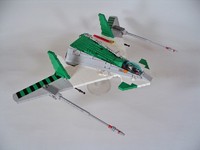
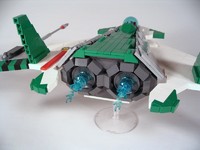
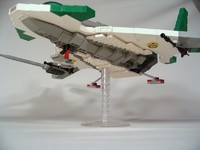
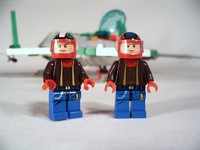
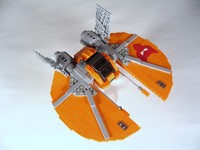
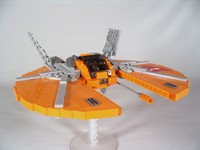
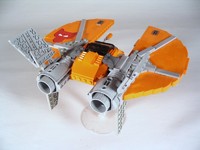
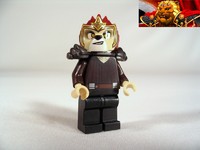
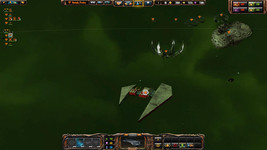
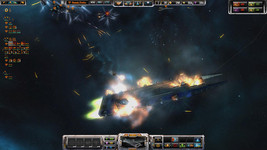
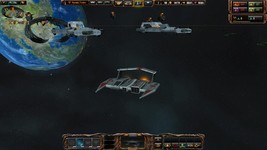
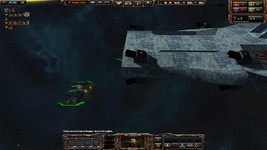
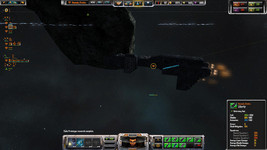
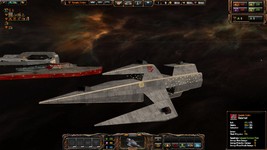
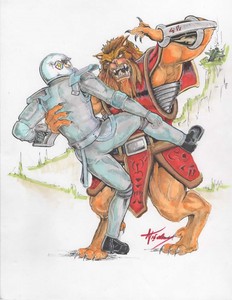
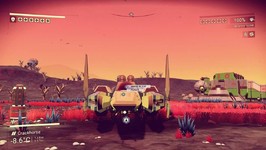
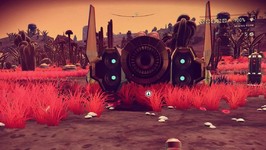
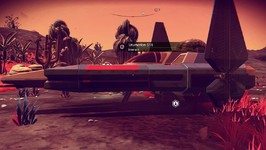
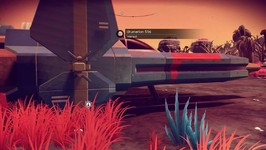
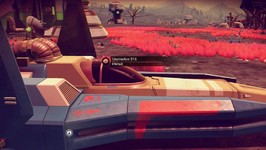
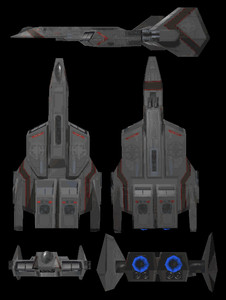

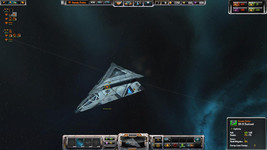
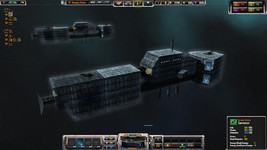
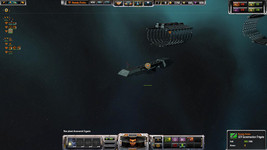

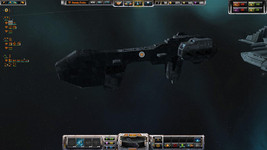
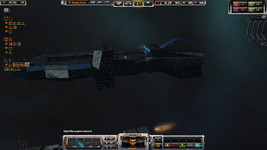
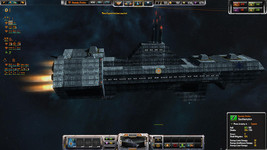
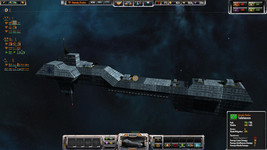
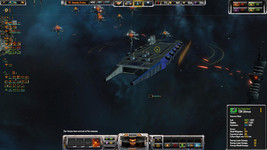
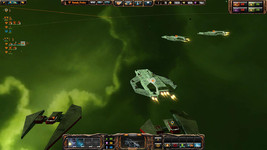

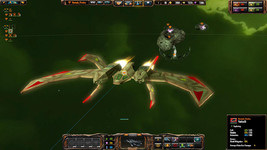
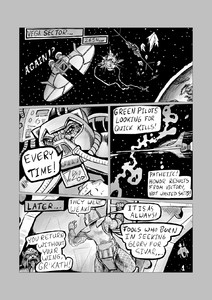
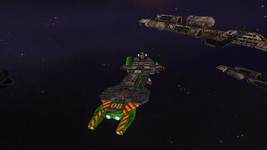
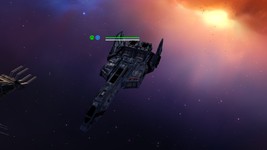
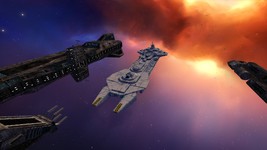
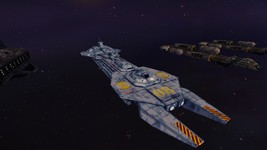
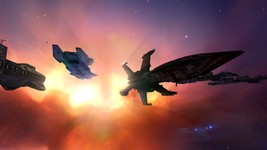


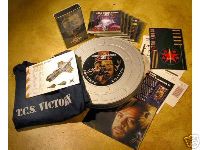

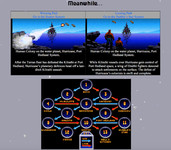
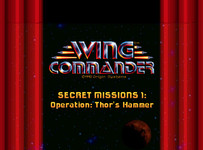

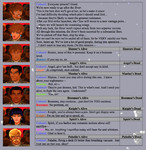


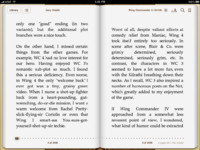
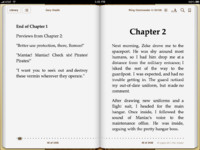
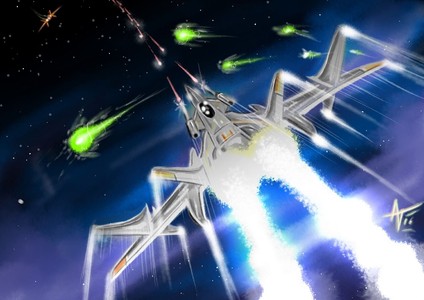
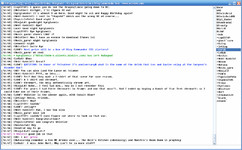
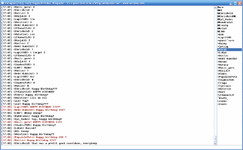
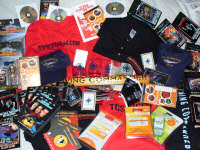
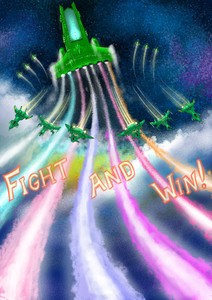
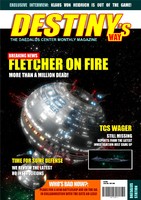
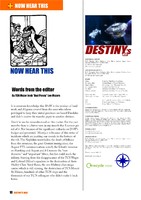

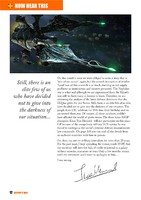
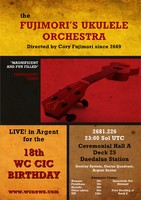
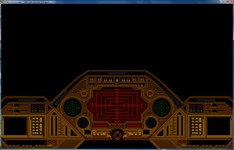
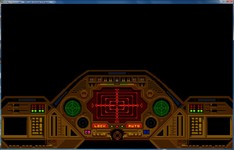
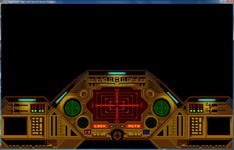






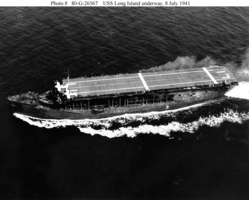
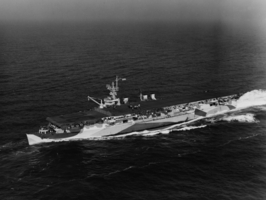
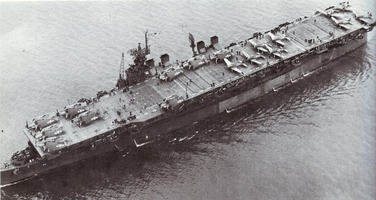
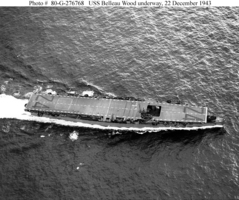
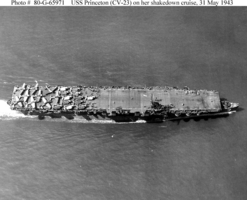
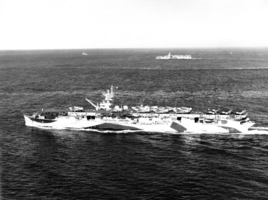




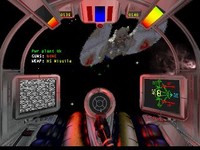
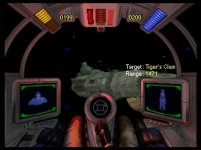
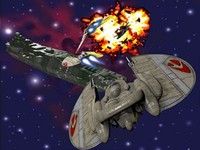
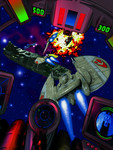
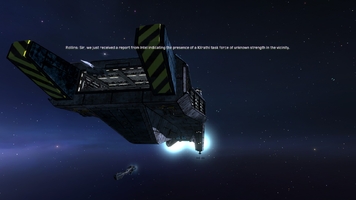
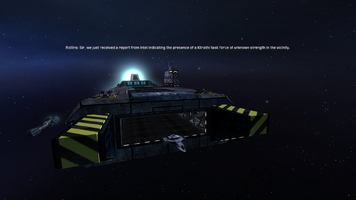
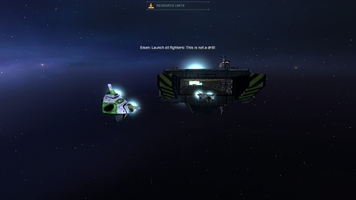
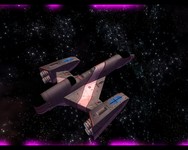
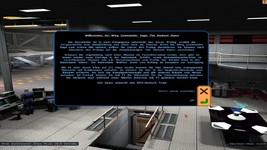
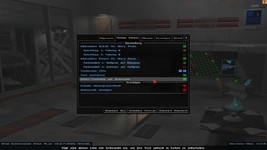



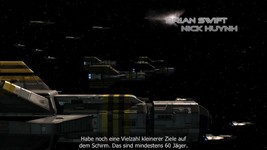
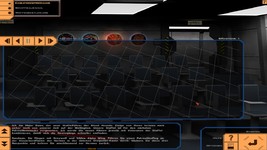
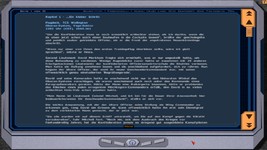

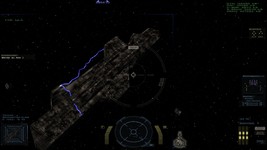

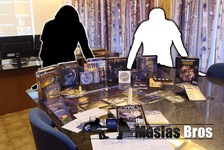


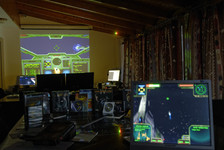
 Over the years, we've posted a lot of fascinating items that are in some way related to the development of a Wing Commander product. These might be never before seen draft scripts that are wildly different from the final story, early sketches of ships and characters, candid photos from the film set, or high resolution source files of things you've already seen in some form or shape. We tend to post this material around specific events, such as a CIC birthday or to celebrate a classic game being released on GOG, and it's not so easy to keep track of it after the news is gone from the front page.
Over the years, we've posted a lot of fascinating items that are in some way related to the development of a Wing Commander product. These might be never before seen draft scripts that are wildly different from the final story, early sketches of ships and characters, candid photos from the film set, or high resolution source files of things you've already seen in some form or shape. We tend to post this material around specific events, such as a CIC birthday or to celebrate a classic game being released on GOG, and it's not so easy to keep track of it after the news is gone from the front page.

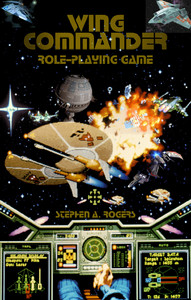
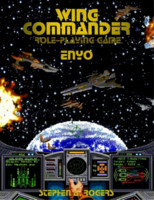

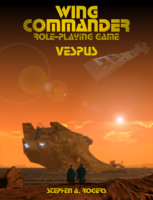

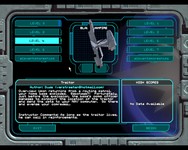
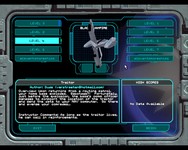
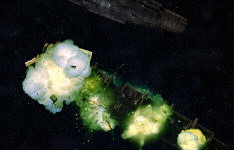


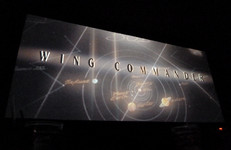
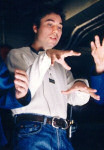
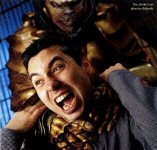

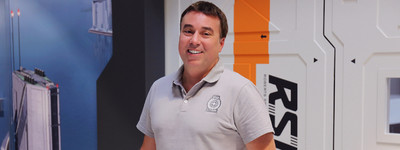

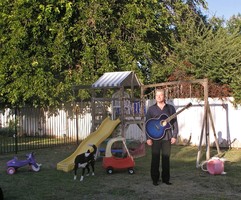
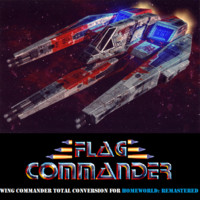
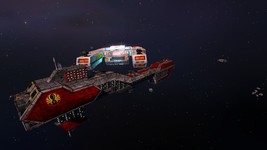
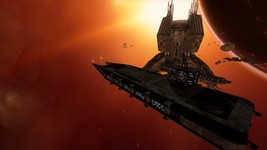
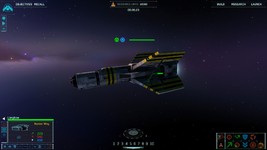
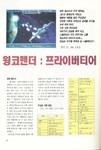

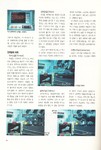
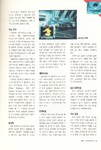

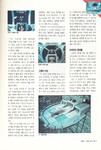


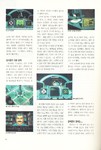
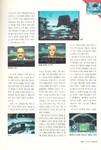
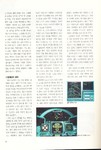
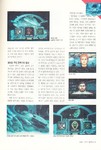
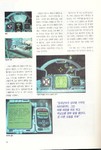
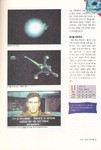
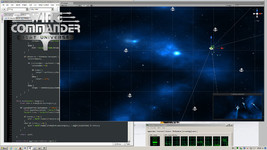
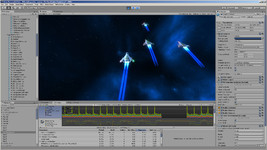
Follow or Contact Us